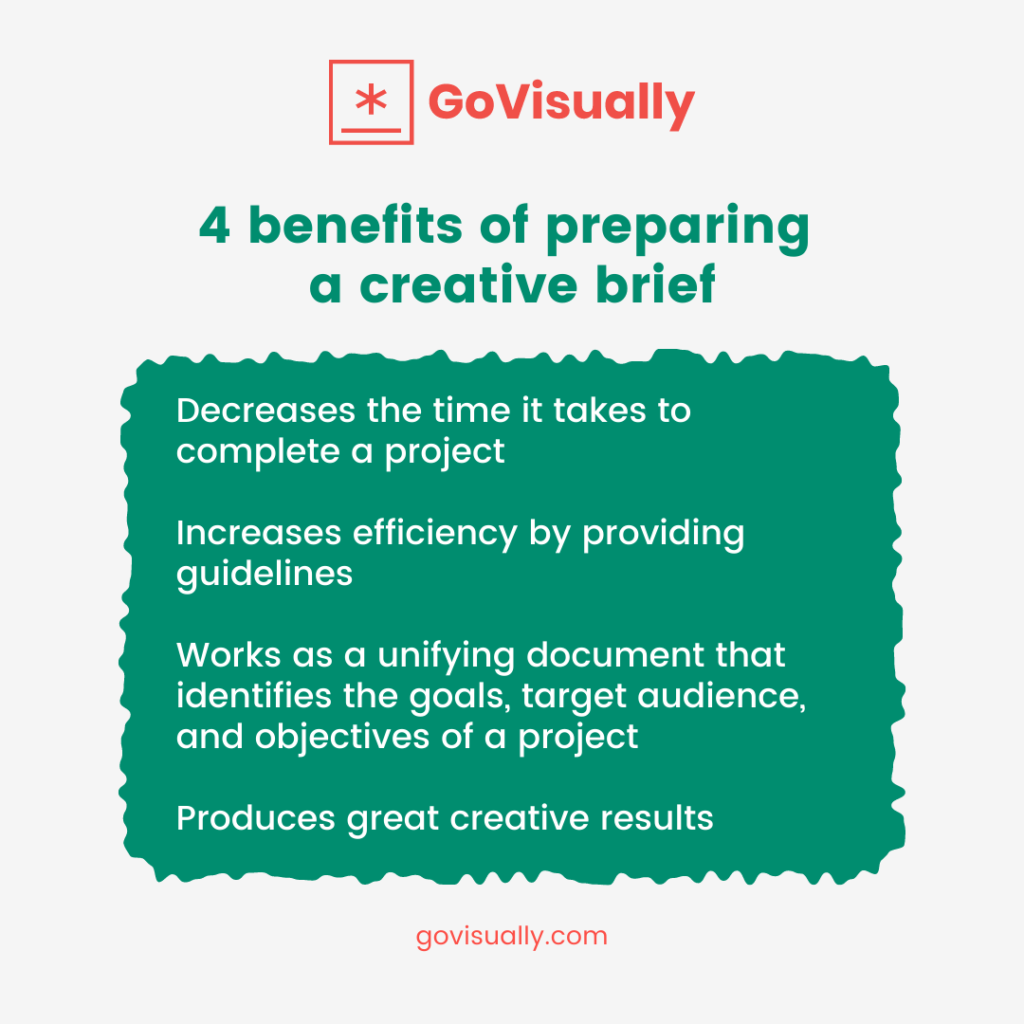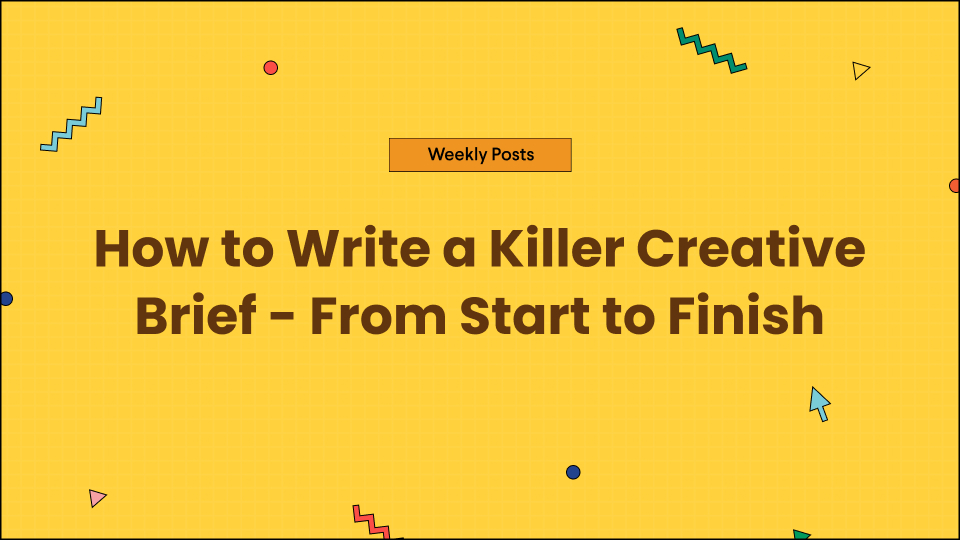Do you know what makes an excellent copy or content that sells and converts? A killer creative brief!
That’s because most of the time, your copywriters or writers, in general, rely on creative briefs to understand and then write the required content.
But if your brief is ragged, uninspiring, or fails to deliver a direction, then you can’t blame the results, can you?
That is why it’s crucial to focus on creating a great creative brief before starting any project. Luckily for you, we will be discussing exactly that today.
We’ll talk about what a creative brief is, why it’s essential, and what steps you can take to write a killer creative brief, from start to finish.
Excited? Let’s dig in!
Table of Contents
What is a Creative Brief?
Creative brief works as a guideline for creative writers, designers, and developers. The project brief is prepared by the client or requester and later approved by agencies or freelancers to fulfill the requirements mentioned in brief.
The brief contains the outline of your entire project and breaks down questions such as; what’s your content going to be? , how do you expect it to be achieved? And for who it is going to be? These questions are elaborated in your brief so that the appointed project managers can complete the latter successfully.
However, since your project’s brief reflects the final content, a robust creative brief will inspire you to swerve your content towards creativity.

Steps to Write a Killer Brief from Start to Finish
1. Decide the structure of your project
This part entails all the necessary milestones for the project, such as deciding a topic, word count, formats, fonts, etc.
The topic should express the purpose of your project to attract the target readers. However, it might sound not essential, but it summarizes the entire purpose of your project.
For instance, your company is initiating to market a product with sponsors through blog posts. The name of your project must include terms suggested by sponsors and your company to define and sell the purpose of your project. Writers usually skip focusing on mentioning this part elusively, which results in vagueness in the meaning of your project.
Moreover, deciding about the project’s length, formatting, and font style engages your target audience into reading the content. After clearing out these specifics, you have an overview of what you want for your project.
2. Give an overview of your brand
This step counts if you are outsourcing the writers or need your new in-house writers to acknowledge the company’s standards. This section in your brief will highlight your brand’s values, mission, and vision for your assignees.
Giving an overview of your brand or company overlays the importance of your company. However, highlighting the background of your brand/ company does not mean that you write about its history. A brief overview of your brand should contain the benchmark it expects the potential writers to achieve.
In this regard, focusing on emphasizing your brand’s values and what your brand conveys will help the writers comprehend and respect the terms you have stated in your project’s brief.
3. Point out the objectives
This step elevates the reason for the project. Objectives set by your brand need to be mentioned in your content brief to specify the purpose of your project. Pointing out the objectives clearly states why this project needs to happen and for who it should happen. This part in your brief is similar to defining your goal to reach your vision effectively.
4. Specify the target audience
How can you ignore the one you are writing for? This step sounds easy but necessitates proper market research to determine your target audience’s various segments like demographics, psychographics, behaviors, and geographics.
Selecting your target audience is another milestone to market your product or service to the accurate target. For example, people with no babies will not look up keywords like “best diapers”.
You can plan out what you want your target audience to learn through your content by finding out the gaps in the market. For that, you can conduct research online on similar products or services and look for the things they are not covering through their content.
Another way is that you create your content on the most asked questions online for a similar purpose. This way, your writers will comprehend to cater to the needs specified in your brief to deliver the content for your preferred audience.
5. Select the media mode
Before you start writing your brief, you must point out how to distribute your content to your target audience to know how the message you want to convey will reach them. However, when it comes to market your product or services through online content, there are plenty of choices to choose from, making it complex for content strategists to select the suitable one.
For example, you cannot decide to put the copywriting content of a webpage to an article or a blog post. So, selecting the suitable one to convey your message should be a priority before writing your brief. You can achieve this target by knowing the depth and length of the project.
Suppose the content needs to be extensive and informative to educate your readers about the benefits of your topic and market your product or service simultaneously. In that case, delivering your message through articles and blog post is the best of both worlds option. This way, you will help readers with knowledgeable content and select your brand to fulfill their needs.
6. Lookout for competitors
While writing your brief, the most critical aspect is to look out for competitors to avoid creating duplicate content.
This concern is considered since search engine optimization prioritizes your content as a primary option for your target audience. However, you can mitigate this factor by visiting your competitor’s content about a similar product and analyze the areas they have failed to cover in their writing. This way, you will learn from the experiences and will be able to convey a creative brief to stand out.
7. Highlight the project’s message
The message of your project is a direction for your writers to comprehend what they will be working on. However, it can be tough to prepare a critical statement of your content since your stakeholders will have various suggestions for you to put up in the message. You can make it simple by focusing on the purpose of your writing.
For example, the purpose of writing your brief is to inform the assignee writers to market a cosmetic product. Your key message would be to disclose the benefits or compare your product so that your target audience can differentiate and select your product accordingly.
8. Elaborate on the project’s limitations
You can’t put everything in your content; you need to state limitations clearly in your brief for writers to make it clear to them. This way, your writers will be aware of your stated boundaries, reflecting on your content’s uniqueness.
Moreover, while stating restricted terms and phrases in your brief, you must ensure to flag your writer about mentioning any products or services of your competitors, so your target audience does not swerve towards looking up your competitor’s commodities.
9. Specify the writing tone
The tone of your writing makes all the difference in conveying your message to the target audience. The tone of your message defines the purpose of your content; that’s why you need to specify the preferred style of writing your content to your potential writers.
However, many writers often skip this step which ends up ruining the context of your content.
10. Provide keyword research
This section is where your brief will elaborate on how you want to optimize your content through search engine optimization (SEO).
To make it comprehensive for the potential writers, you need to list specific primary and secondary keywords you think will increase your web page’s traffic. To find keywords to put in your brief, you can use online tools like Ubersuggest, Ahrefs, SEMrush, and Moz.
11. Specify the deadline
Last but not least, the most critical section in your brief is to define when you are expecting your project’s delivery. Mostly, writers tend to skip mentioning deadlines in their briefs, but it underlines the importance of your project. To be concise, your potential writers will know how much delivering work on time means to you.
In addition, you should always mention the due date one or two weeks before the actual delivery date. This way, you will be able to cope up with errors that can hinder your content’s quality at the last moment.
Share Creative Briefs with GoVisually Share
Have a new creative brief for a project that you need to share with your co-workers or team?
You can do that freely now with GoVisually Share.
Simply upload your brief and share it with anyone and everyone you want!




